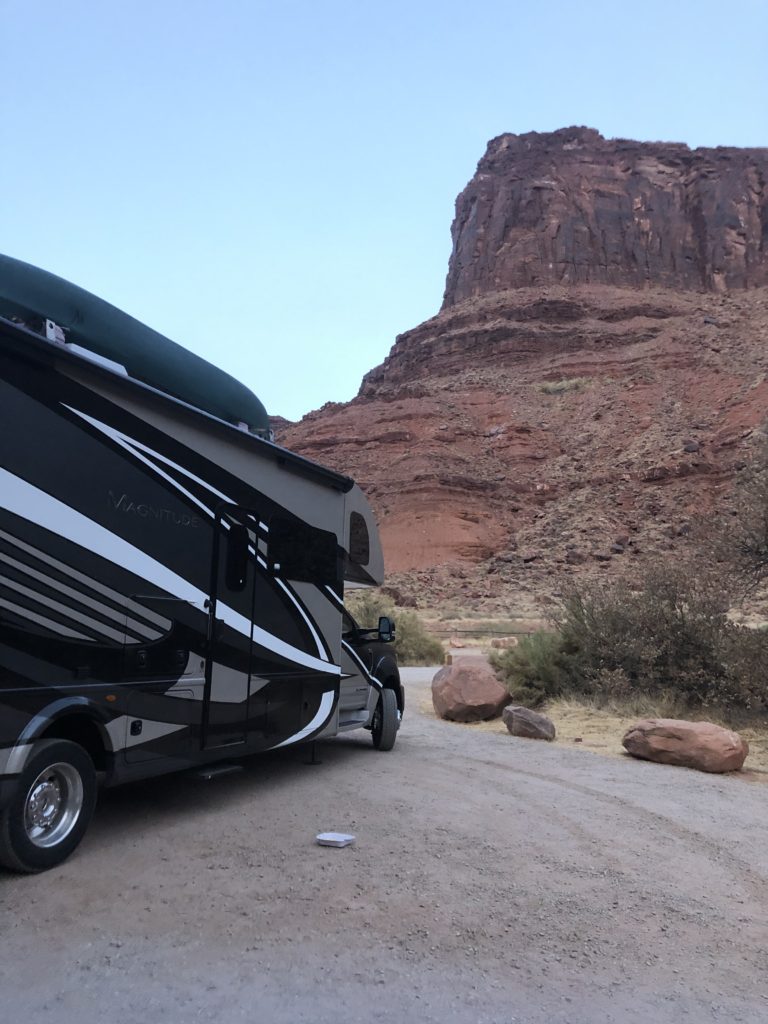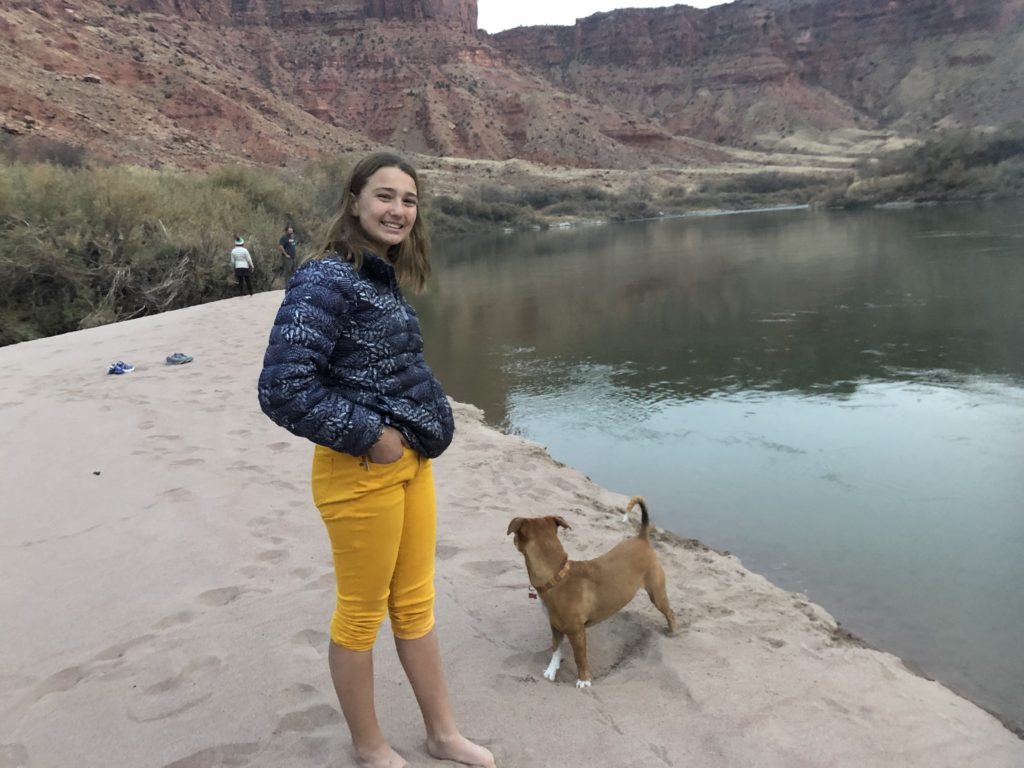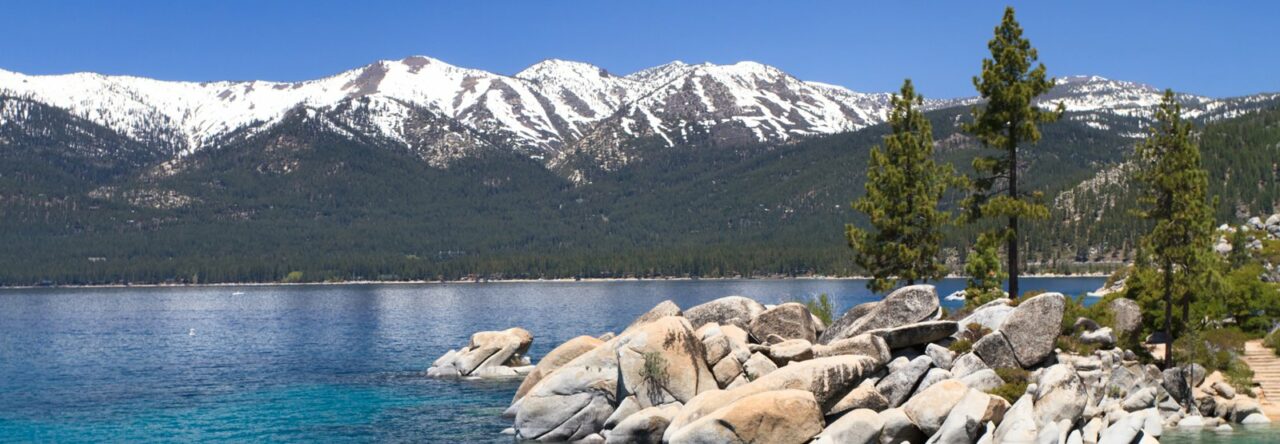We left Grand Junction and decided to head West to Moab and Arches National Park and get Utah’s Mighty 5 in on our way home for Thanksgiving.
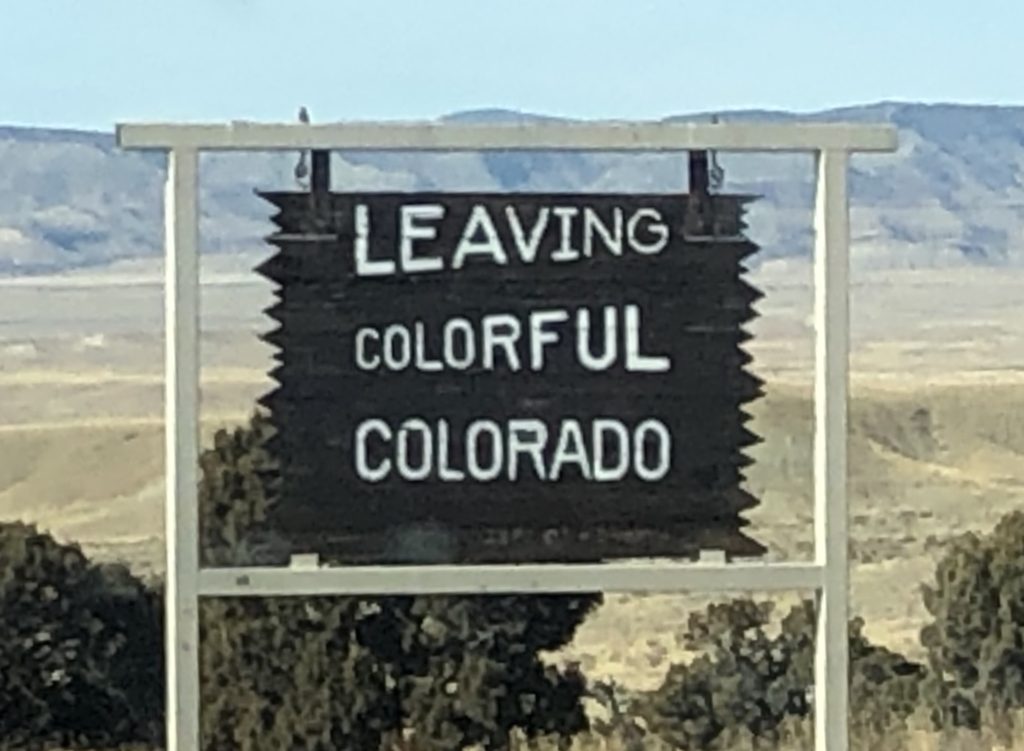

We drove through Castle Valley on the way to Moab/Arches and it was so pretty. We decided we were going to drive into Arches today, but camp along the river.
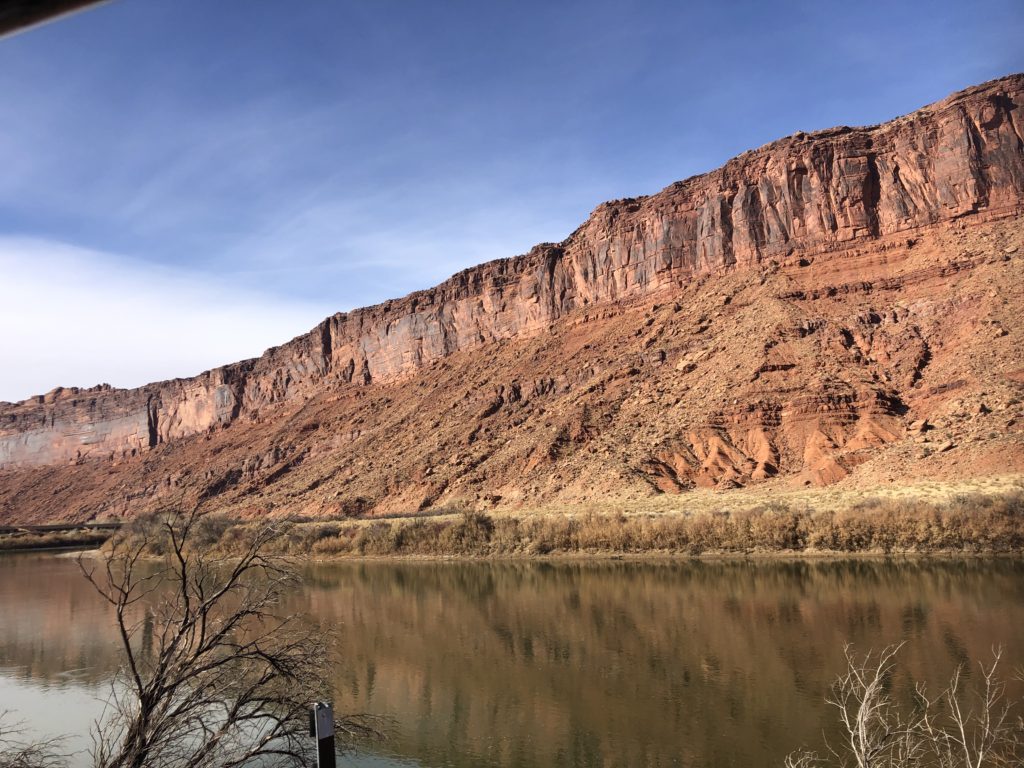
Arches National Park. 11th National Park.
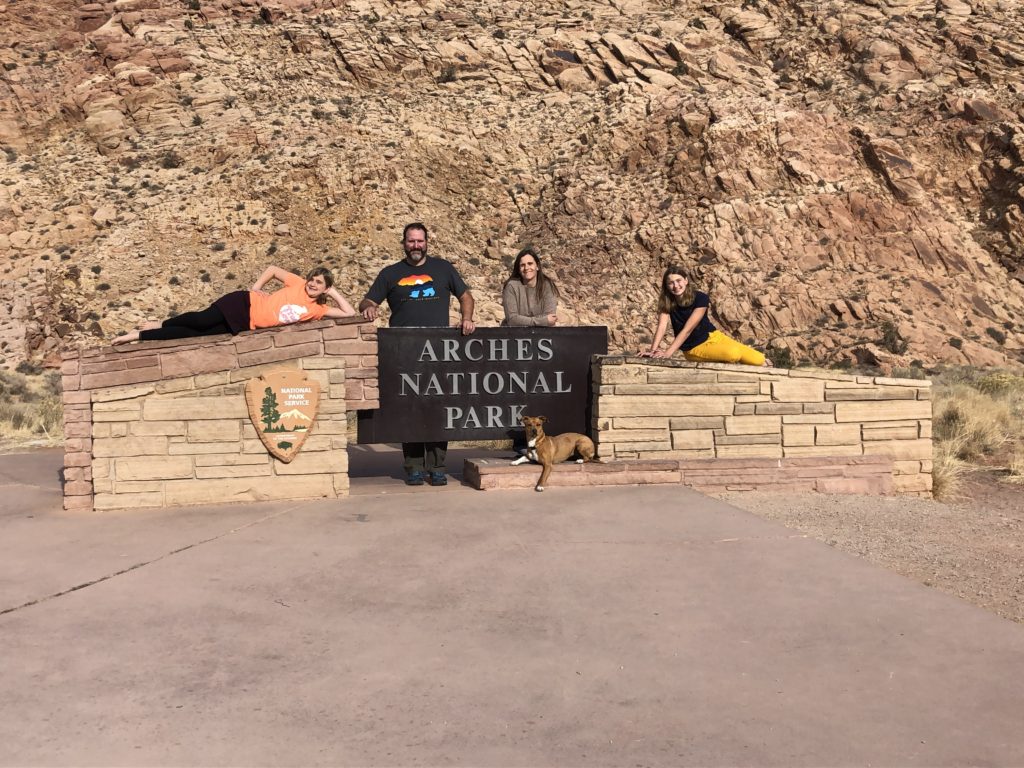
Arches National Park. These famous and not as well known arches (there are over 2000 in the park) are created from the forces of water, but not a stream or river. Instead its the freeze/thaw cycle of water or “frost-wedging”.
From the weight and pressure of some 5,000 feet of sedimentary rock, a large layer of salt buckled and thrust upward layers of rock also creating “vertical” faults. The formations visible today are from the salmon colored “Entrada Sandstone” (140 mya) and the “Navajo Sandstone” (210 mya)
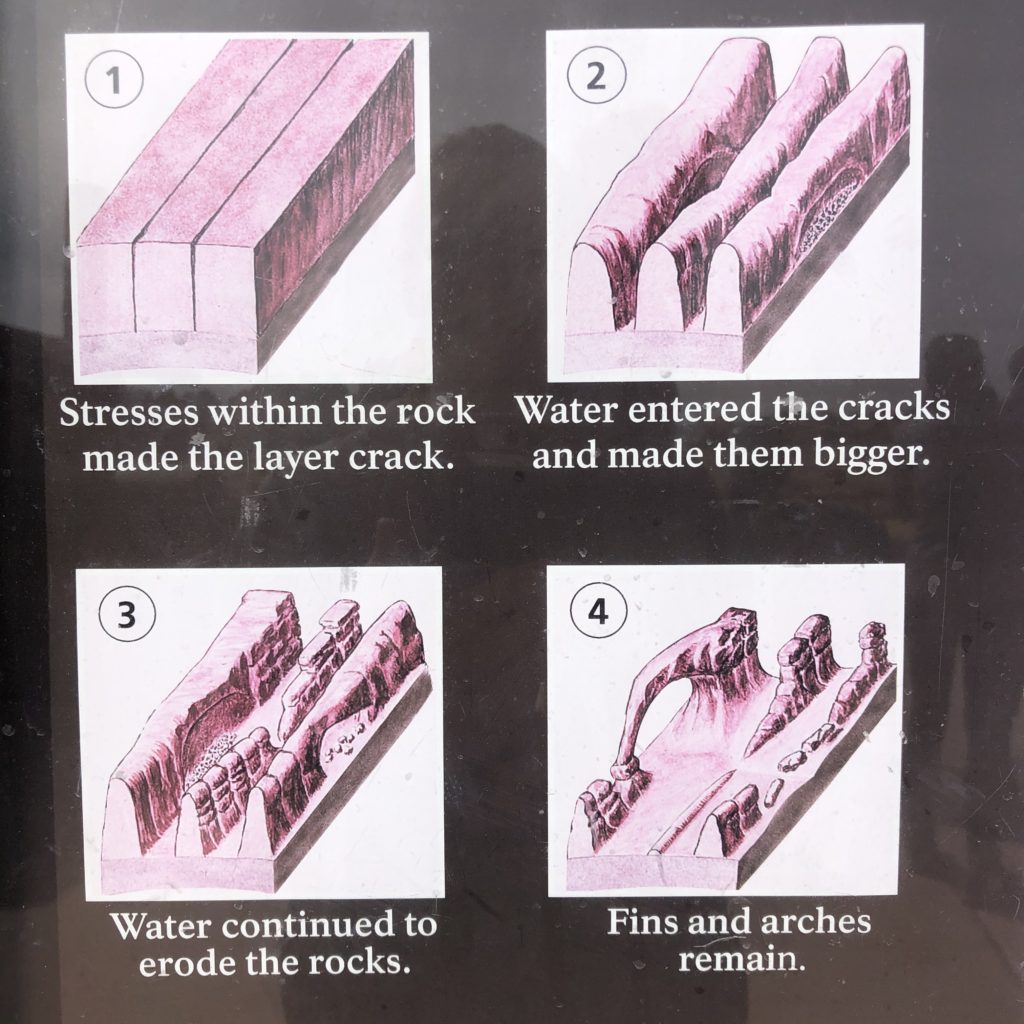
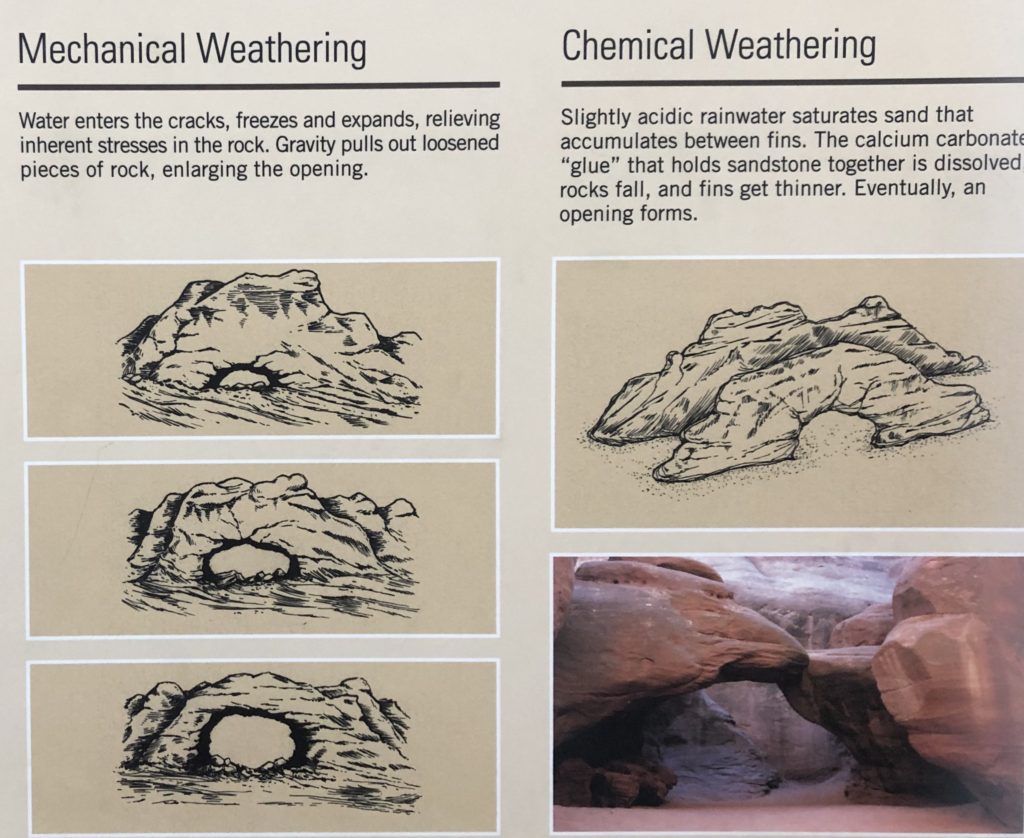
Biological Soil Crust: Everywhere in this high desert area of Utah & Colorado we are taught about Biological Soil Crust. What is it??
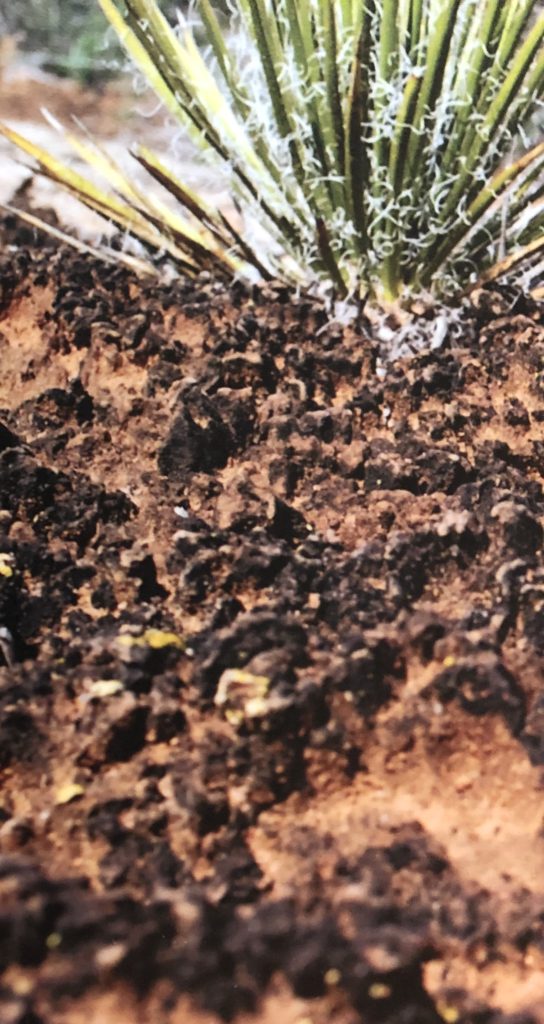
Biological Soil Crust is made up of algae, cyanobacteria, lichens, mosses, liverworts, and fungi. It forms a dark lumpy surface that absorbs rainwater and holds sand grains together and can turn desert sand into soil. It takes decades for a thick crust to form. Up to 250 years in its mature forms. One step can harm/kill the biological soil crust. Biological Soil Crust has many uses.
It prevents erosion. The crust stabilizes the sand and soil. Cyanobacteria has sticky filaments which hold sand and soil particles together.
Helps retain moisture. The crust expands with rainwater and can hold water better than soil after a rain.
Adds nutrients to the soil and makes the soil more fertile. Some Cyanobacteria and lichens fix nitrogen from the air and make it available in the soil in forms that plants can use.
After a stop at the visitor center we went back up the valley to camp along the Colorado River. Which is green by the way compared to the brown of the Mississippi.
